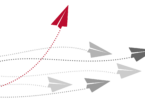ATHENS, Ga. – People with a disease called chronic dry eye will have access to a new treatment this spring.
In December, the U.S. Federal Drug Administration approved the drug RESTASIS for chronic dry eye in humans. The prescription drug is based on University of Georgia research conducted by veterinary ophthalmologist Renee Kaswan, a former professor at the UGA College of Veterinary Medicine.
“Dr. Kaswan has invented an important treatment,” said Rob Fincher, UGA director of technology commercialization. “To my knowledge this will be the first prescription drug to go on the market that treats dry eye in people by allowing the tear ducts to produce tears.”
Dry eye is characterized by an insufficient production of tears, which lubricate the eye and remove foreign debris. Because the cornea lacks blood vessels, it also depends upon tears to provide proteins required for tissue health and repair.
“Dr. Kaswan’s invention reduces inflammation of the tear ducts and enables them to resume their normal functions,” Fincher said.
Previous treatments were “basically wetting agents for the eye,” said Kaswan, an expert on corneal diseases in dogs. Her invention not only “allows tear glands to regenerate Š [but also] decreases inflammation in the cornea, conjunctiva and eyelids, further relieving the signs and symptoms of ocular surface disease.”
Each year, an estimated one million people in the United States experience symptoms caused by chronic dry eye – also known as keratoconjunctivitis sicca, or KCS. The irritating and often painful condition can lead to serious cornea damage.
More than a decade ago Kaswan began developing and implementing a treatment for dry eye, a common cause of canine blindness. She found that ultra-low doses of cyclosporine – a drug used in organ transplant patients to suppress the body’s rejection responses – are an effective treatment for canine dry eye. Her research netted her the university’s Inventor of the Year Award in 1998 and its Creative Research Medal in 1992.
While many prescription drugs are developed for people and later used for dogs, “this may be the first time a drug has been developed first for veterinary use and then tested and approved for use in human patients,” Kaswan said.
Her canine drug invention, Optimmune ®, was the first of its kind and was approved for use in dogs in 1994, said Fincher. The late university bulldog mascot UGA IV was among the first canines to benefit from the treatment, which is now marketed in more than 35 countries.
The University of Georgia Research Foundation Inc. holds patents on the Kaswan invention. The foundation is a private, non-profit organization established to enhance the UGA research environment and to make UGA’s patented inventions available for commercial development. It granted a license to Novartis AG, headquartered in Basel, Switzerland, to distribute the treatment for human use. Novartis then sublicensed the rights to Allergan Inc., a California-based pharmaceutical company that will manufacture and distribute RESTASIS.
##







